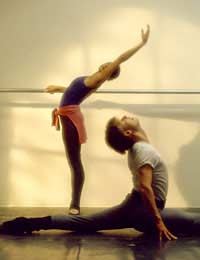A History of the Royal Academy of Dance

The Royal Academy of Dance is one of the most prestigious places to study at for any aspiring dancer. And even though it has a royal charter from the UK monarchy and the Queen is its patron, its reach extends far and wide beyond the confines of the British shores. In fact, the Royal Academy has presence of some kind in 79 countries across the globe. Like many dance organisations, in the UK in particular, the academy has a long and illustrious history and has taken on many guises in its time.
Dance Teaching in 1930
In 1930, the standard of teaching of dance in the UK was poor or non-existent. But there was a great love of dance and a great appetite for dance among the people of the country at that time. So, a group of professional dancers who had noticed this anomaly got together to form the Association of Teachers of Operatic Dancing in Great Britain. These professionals were not just from British shores, in fact, the opposite was true and they came from across Europe, all with the same aim – making dance teaching in Great Britain of a good and recognised quality.Royal Involvement
With such an eminent group of professionals coming together as was the case with the association, it was only a matter of time before it started to rise to national prominence. In addition, it remained the only organisation of its kind. And so, not long before the end of King George V’s reign, it was granted a royal charter and this was also the cue for it to change its name to the Royal Academy of Dance.The royal connections do not end there though. In 1953, following the death of Queen Mary, Queen Elizabeth was appointed the patron of the academy, and it followed this up by gaining charitable status some ten years later.
Expansion
It was now clear that the Royal Academy of Dance was the envy of the world and it was time to open up outposts elsewhere in the world, with the first one being in Australia. It was also expanding in the UK though and grew to such a level that a full degree began to be offered for those who wanted to make a career out of their passion. Since these times, the academy has gone from strength to strength. And although it is the biggest organisation of its type in the world, standards continue to be rigorously high.Now, as well as training dance teachers themselves, the academy takes part in a whole host of other dance-related activities. There is a wide ranging and varied children’s programme which is given considerable time and attention, as the academy focuses on its duty to the top dancers of the future. There are more courses available to those who want to teach dance than ever before, and the membership reaches so far beyond the original stated aims of the founders, that could they see now what they have achieved, it is safe to think that they would be pleased with the result.


Re: Joining A Dance Company Or Dance Group
I want join dancing team and work with team.please contact me.
Re: Joining A Dance Company Or Dance Group
I love dancing I want to kn more about dance
Re: Joining A Dance Company Or Dance Group
I have a dancing group so I want to compete with other teams
Re: Joining A Dance Company Or Dance Group
hi please I want to join this group because I love dancing but I dont have a group. this will help me to know how to…
Re: Joining A Dance Company Or Dance Group
I know i cant sing,but i can dance,i want it to show my dance to all people who watching
Re: Joining A Dance Company Or Dance Group
I love dancing and I want to know how to dance
Re: Joining A Dance Company Or Dance Group
I love dancing and I want to dance and become a dancer
Re: Joining A Dance Company Or Dance Group
Hello im Krish im doing Dance form 9 or 10 and i want join and earn my form my future and my profession and i can do…
Re: Joining A Dance Company Or Dance Group
I love you all
Re: Joining A Dance Company Or Dance Group
I want to join please get back to me+2347046149932